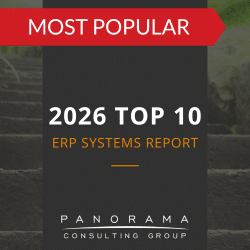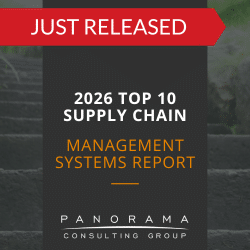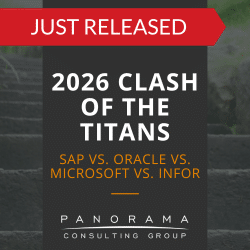In August 2004, Hewlett-Packard (HP) made a devastating announcement: The third-quarter revenue for its Enterprise Servers and Storage (ESS) segment had decreased in value by 5% from the previous year to $3.4 billion.
A major factor behind the decline? A failed ERP implementation at HP. The project, which took place at HP’s North American division, focused on simplifying the company’s portfolio of systems into a central platform.
Today, we’re taking a closer look at the Hewlett Packard ERP system failure case study to understand where things went wrong at the company during data migration. We also share key lessons you can take away from the ERP implementation failure at HP if you’re planning a similar ERP project.
A Failed Payroll System Implementation
Panorama’s Expert Witness team was retained to provide a forensic analysis and written report to the court regarding the failed implementation of a major software developer’s ERP/payroll system.
The Hewlett Packard ERP System Failure: What Happened?
In 2004, HP set out to streamline the disparate ERP systems across its North American division into an integrated order-processing and supply chain management system.
This implementation was the 35th project of its kind throughout HP’s global divisions. The company had completed 34 successful projects built around a similar architecture and following a similar plan. However, the 35th and final project was doomed right from the start.
Ultimately, operational problems and project missteps cost Hewlett-Packard’s ESS group around $400 million in lost revenue and $275 million in operating profit. In addition to ESS, HP’s Business Critical and Storage businesses also experienced fallout from the failure.
So, what went wrong and how can you avoid such issues in your own project? The ERP failure at Hewlett-Packard can be attributed to three primary causes:
3 Lessons Learned From the HP Failure
1. Project Teams Shouldn’t Work in Siloes
Enterprise resource planning is so-titled because it affects everyone in your enterprise. In the case of HP, it affected everyone across the North American division.
Throughout the project, the team responsible for planning and managing the implementation should include stakeholders from across your company, such as your sales team and HR department.
This wasn’t the case, with HP. Before the HP data migration, every sector had its own ERP system, and team leaders had a difficult time bridging the gaps between departments. This pain point would prove detrimental because the new platform required collaboration and system integration. Naturally, employees had difficulties adjusting to this new mindset.
Investing in project management and organizational change management could have helped HP employees adapt to the integration more seamlessly.
2. Prioritize Data Integrity
Any time you move data from your legacy systems into a modern solution, it’s critical to make sure the data is clean, accurate, and relevant.
Hewlett-Packard representatives acknowledged that there were missteps at this juncture. Specifically, orders were becoming lost as they moved from the old ERP software to the new SAP platform.
As you can imagine, this caused fulfillment times to lag, which led to customer frustration. Faced with losing sales, HP was forced to temporarily direct orders through its channel partners and expedite some orders through air shipments.
Despite their best efforts, the fourth-quarter backlog totaled around $120 million.
As employees worked to solve the data transfer issues, it heaped even more time onto an already behind-schedule project. Building workarounds also inflated the budget and cut into the project’s gross margins.
Data migration and testing is an essential step that your project team can’t overlook. While the process requires significant time and resources, mistakes are even more costly to fix.
3. Plan for Unexpected Increases in Demand
The HP migration centered on the company’s server business, which was based on Intel software. At the time of the project, demand for those products was high and trending upward. Surprisingly, it remained high even after the failure.
While this was good news for business, it was bad news for a system that wasn’t properly integrated and adopted. Naturally, the new SAP platform struggled to keep up with the influx of orders.
It can be difficult for any system to keep pace with a flood of orders, much less one that’s buggy and missing critical data.
The company should have anticipated such an increase in demand and made contingency plans to react accordingly. Ideally, the three-week contingency plan should have spanned to at least five to six weeks to ensure everything was up and running when orders came in.
Avoid These Critical Issues With Your ERP Implementation
While nearly 20 years have passed since the Hewlett Packard ERP system failure, the same lessons that applied then are still relevant today.
It’s understandable to lean toward a shorter timeline and lower budget when planning your project. However, rarely do expedited migration projects result in long-term success, as seen with the ERP implementation failure at HP.
With proper planning, you can avoid a similar fate with your own implementation. Contact our ERP consultants below for a free consultation.














